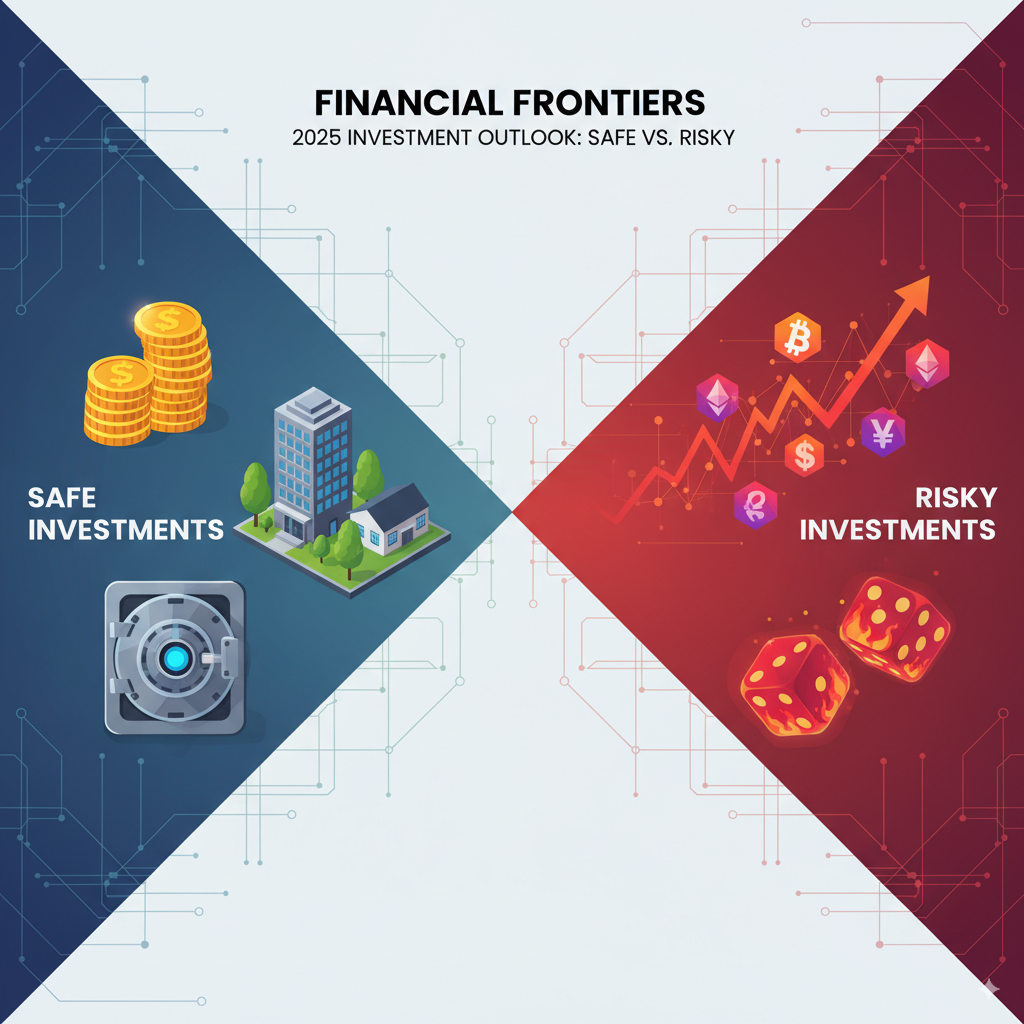Best High-Yield Investment Strategies in 2025: Safe vs Risky Options Explained
In 2025, investing feels both exciting and confusing. Every day, I hear people talking about crypto, stocks, or real estate. Over the years, I’ve realized that building wealth is less about chasing the hottest trend and more about creating balance. In this blog, I’ll share what I’ve learned about safe and risky investments, where they fit in, and how I personally manage my portfolio.

Balancing high-yield investments between safe and risky choices in 2025.
Safe High-Yield Investment Options
Safe doesn’t mean boring. These options may not double your money overnight, but they give peace of mind and steady growth. In my own portfolio, these form the foundation.
- Fixed Deposits (FDs): Banks and NBFCs are offering special FDs with 7–8% returns. The best part? No sleepless nights worrying about volatility.
- Government Bonds: India’s sovereign bonds or US Treasuries give predictable returns. They won’t make you rich fast, but they protect capital.
- Dividend Stocks: Companies like Infosys, TCS, or Coca-Cola provide not only growth but also consistent dividends. I reinvest dividends for compounding.
- Real Estate Investment Trusts (REITs): Without buying property, I can earn 6–10% returns from commercial real estate. A great passive option.
Riskier High-Yield Investment Options
These are exciting but unpredictable. I’ve seen friends make huge profits—and others lose everything. Personally, I treat these as growth boosters, not my main plan.
- Cryptocurrency: Bitcoin, Ethereum, and altcoins can swing 20% in a day. I only invest what I can afford to lose, but the upside is unmatched.
- Growth Stocks: Tech and green energy companies are shaping the future. Tesla, Nvidia, or Adani Green can give 50%+ returns—but also crash.
- Options Trading: Options allow high leverage. When I started, I learned the hard way how risky they are. Now, I trade cautiously and only with strategy.
- P2P Lending: Platforms offering 10–15% interest sound tempting, but there’s always default risk. I diversify to reduce the impact.
Safe vs Risky: A Quick Comparison
| Aspect | Safe Investments | Risky Investments |
|---|---|---|
| Returns | 6–10% annually | 15% to 100%+ possible |
| Risk Level | Low to Moderate | High to Very High |
| Liquidity | Moderate (bonds, FDs) | High (stocks, crypto) |
| Best For | Capital safety, stable growth | Aggressive growth, speculation |
💡 My Strategy
I follow a 70:30 rule—70% in safe assets for stability, 30% in risky bets for growth. This way, I don’t panic when markets dip, and I still enjoy the upside when things go well.
Frequently Asked Questions
What’s the safest high-yield option in 2025?
Government bonds and REITs are considered the safest with decent yields.
Is crypto still a good investment?
Yes, but only if you accept high volatility. I treat it as a speculative asset, not my core holding.
How much should I invest in risky assets?
It depends on your risk tolerance. Personally, I limit it to 30% of my portfolio.
Are dividend stocks safe?
Safer than growth stocks, but still linked to market risk. Choose blue-chip companies with a history of payouts.
Conclusion
Writing this, I looked back at my own investing mistakes—chasing quick profits, falling for hype, and ignoring balance. The truth is, wealth grows slowly. In 2025, opportunities are plenty, but without discipline, even the best strategy fails. My advice? Build a solid base with safe investments, then use risky ones to accelerate growth. That balance has worked for me, and I believe it’s the most sustainable way forward.